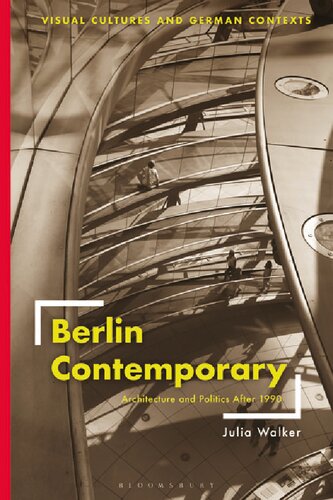
Berlin Contemporary: Architecture and Politics after 1990 PDF
265 Pages·2022·6.875 MB·English
Most books are stored in the elastic cloud where traffic is expensive. For this reason, we have a limit on daily download.
Preview Berlin Contemporary: Architecture and Politics after 1990
Description:
For years following German reunification, the city of Berlin was the largest construction site on the European continent, with striking new architecture proliferating throughout the city in the 1990s and early 2000s. Among the most high-profile and also the most contested of the new projects were those designed and built for the national government and its related functions. Berlin Contemporary explores these government buildings and plans, tracing their relationship to the work of modernist architect-luminaries such as Bruno Taut and Louis Kahn while also situating their iconic forms and influential designers within the spectacular world of global contemporary architecture. Close studies of these projects, including Norman Foster’s redesigned Reichstag, Axel Schultes and Charlotte Frank’s Chancellery, and the controversial reconstruction of the Berlin Stadtschloss, reveal that—official claims notwithstanding—what is actually on view in the “New Berlin” is a complex and ongoing negotiation of the demands and procedures of statecraft on the one hand, and the techniques of globalized contemporary architectural practice on the other.
See more
The list of books you might like
Most books are stored in the elastic cloud where traffic is expensive. For this reason, we have a limit on daily download.
